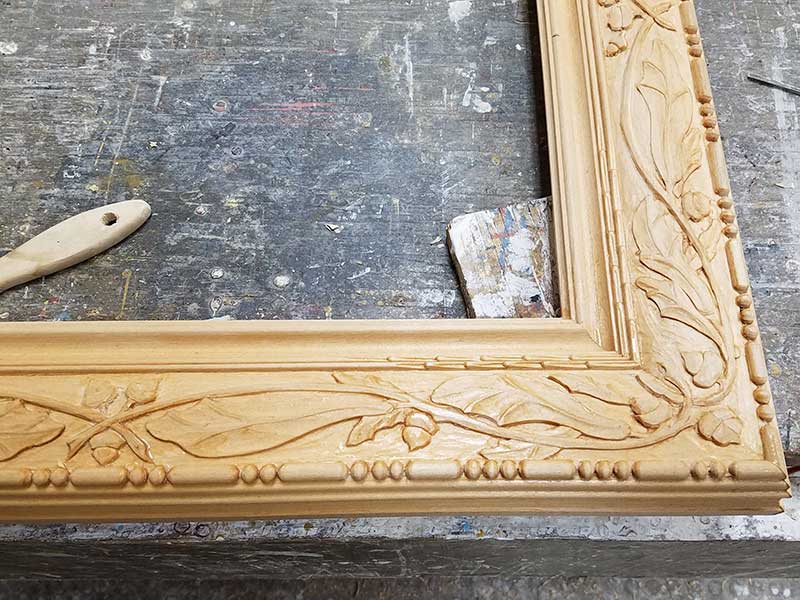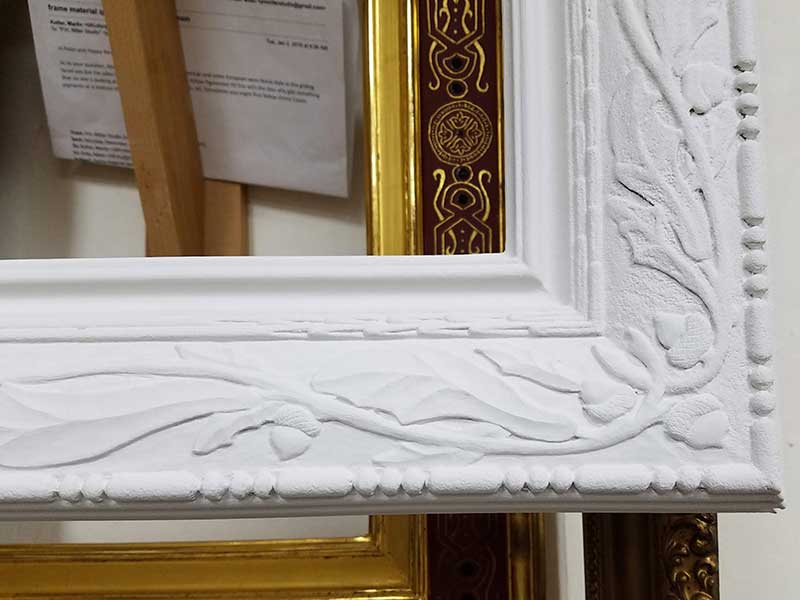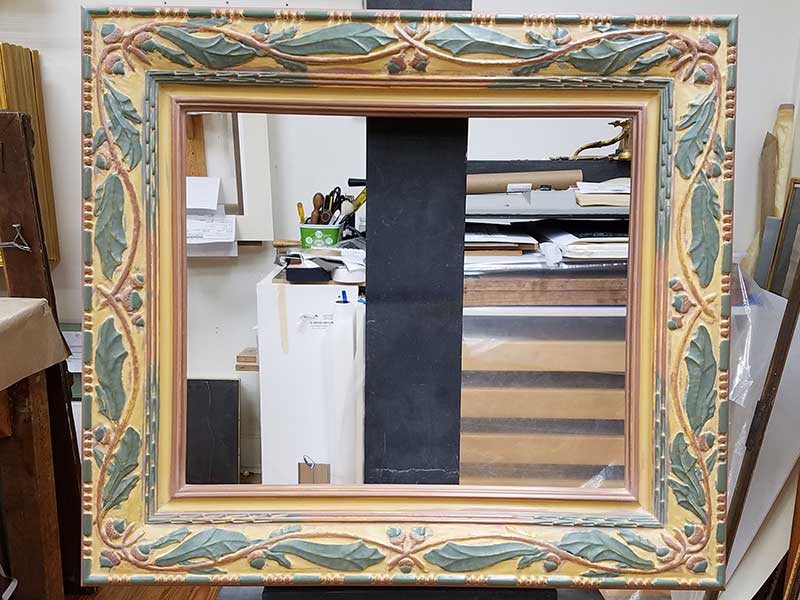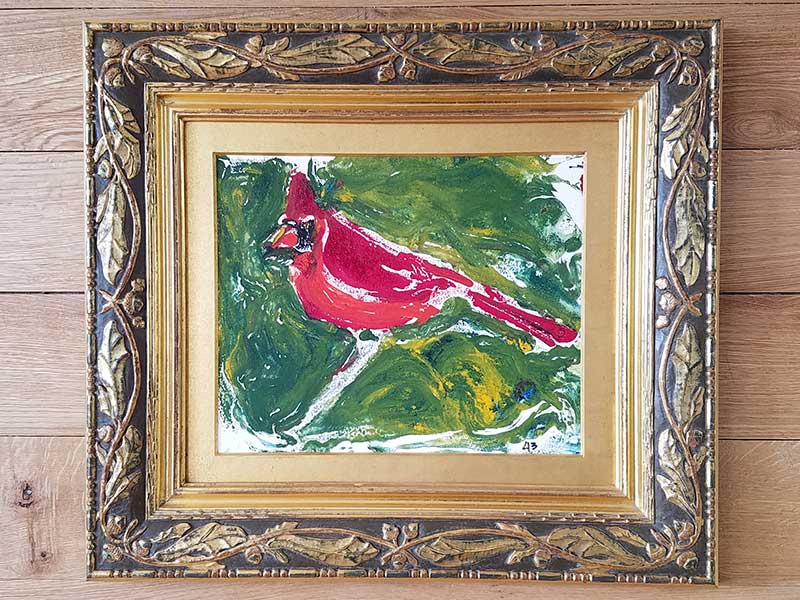Our Process
For this commissioned frame for “The Cardinal” by George W. Bush, 43rd President of the United States for a private client.
We consider the age, origin, subject, and medium of the painting. The color, texture, and level of detail also play a large role in our decision making. Clients often weigh in and provide critical feedback during various stages of the design process, and we typically produce many sketches before arriving at a final set of detailed scale drawings.
Fine frames always begin with thoughtful design.
We begin with the molding which is machine milled or hand shaped. The frame is joined using various traditional and modern techniques. We transfer any drawings or patterns to the wood and hand carve all the ornamentation with gouges and a mallet. Carving is a labor of love and very time consuming, but the organic beauty of a hand carved frame cannot be reproduced by a
machine or a casting.
We execute a wide variety of fine finishes, but we are best known for the exceptional quality of our water gilded frames. Water gilding is an ancient process of applying gold leaf to wood. We begin the process by making and applying at least eight coats of gesso to the wood. Gesso is a mixture of ground chalk and rabbit skin glue. The gesso dries to a very thick coating which we carefully sand, scrape, and polish to an extremely smooth surface. We further refine our carving during this process, as gesso holds much finer detail than raw wood alone.
Once the gesso is completely smooth, we apply bole to the surface. Bole is a thin paint made of rabbit skin glue and pigmented gilder’s clay, and it serves several important functions. First and foremost, the clay is finer and softer than the gesso. This provides a thin “cushion” that allows us to burnish the gold leaf later in the process. Additionally, gold leaf is so thin that light, and therefore color, passes through it. The pigmented clay allows us to create sympathetic color schemes beneath the gold that add additional depth and nuance to the finished product. We typically apply five or six coats of bole – enough to create an opaque layer of color and an adequate “cushion” for burnishing.
Finally, we apply the gold leaf to the frame. To do this, we brush water onto the surface. This rehydrates the rabbit skin glue in the bole. Then we use a specially-made brush, called a gilder’s tip, to pick up the gold leaf and gently set it onto the wet bole. As the bole dries, the rabbit skin glue permanently adheres the gold to the frame. In several hours, when the bole is almost dry, we rub the surface with an agate stone to burnish the gilding. The pressure from the agate compresses the surface of the bole “cushion” beneath the gold. The burnishing creates the exceptionally brilliant surface that sets water gilding apart from all other forms of gilding.
After gilding and burnishing, most frames still require some “toning” to adjust the hue and reflectivity of the gilding. We use any number of pigments, coatings, and potions to create a wide variety of visual effects. Often, we distress and tone a frame to look antique, or “period appropriate.” Our attention to detail during these final steps ensures that the brilliant gold never overwhelms the artwork.




